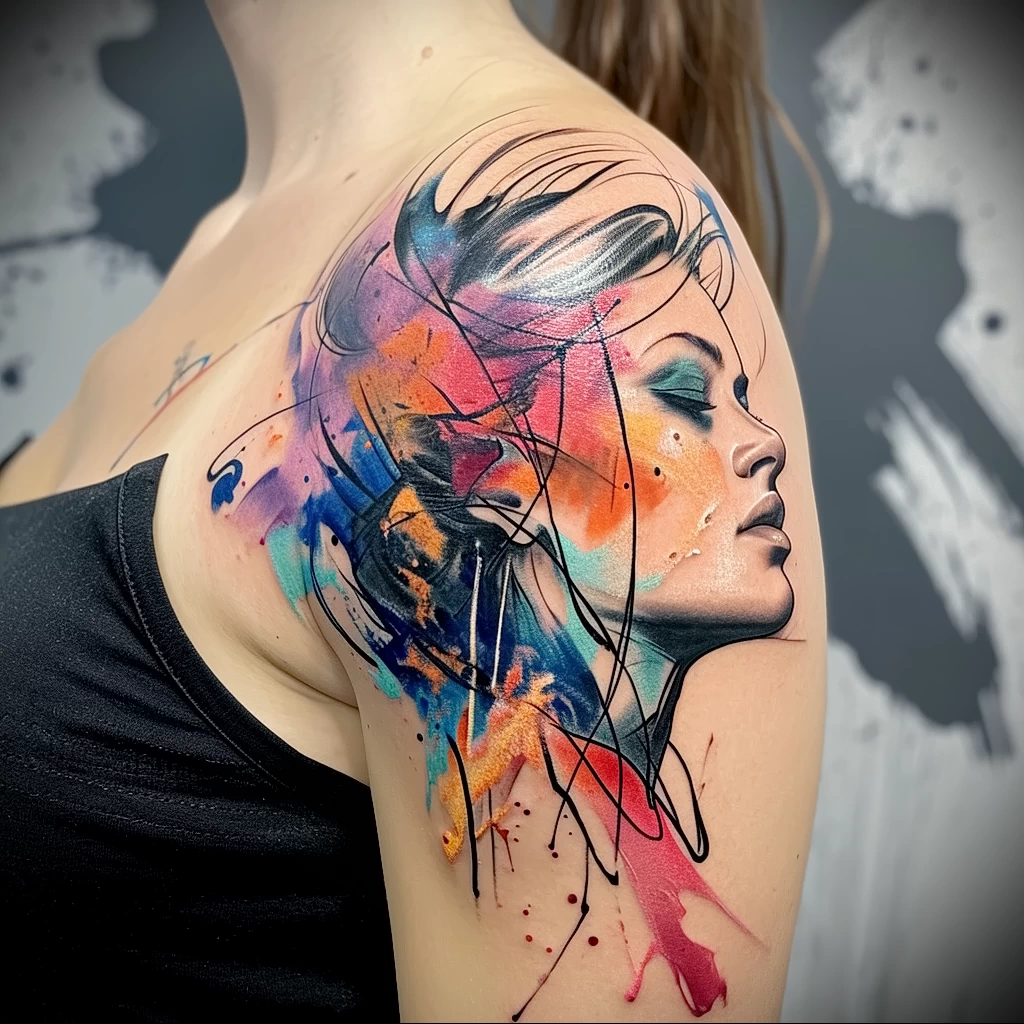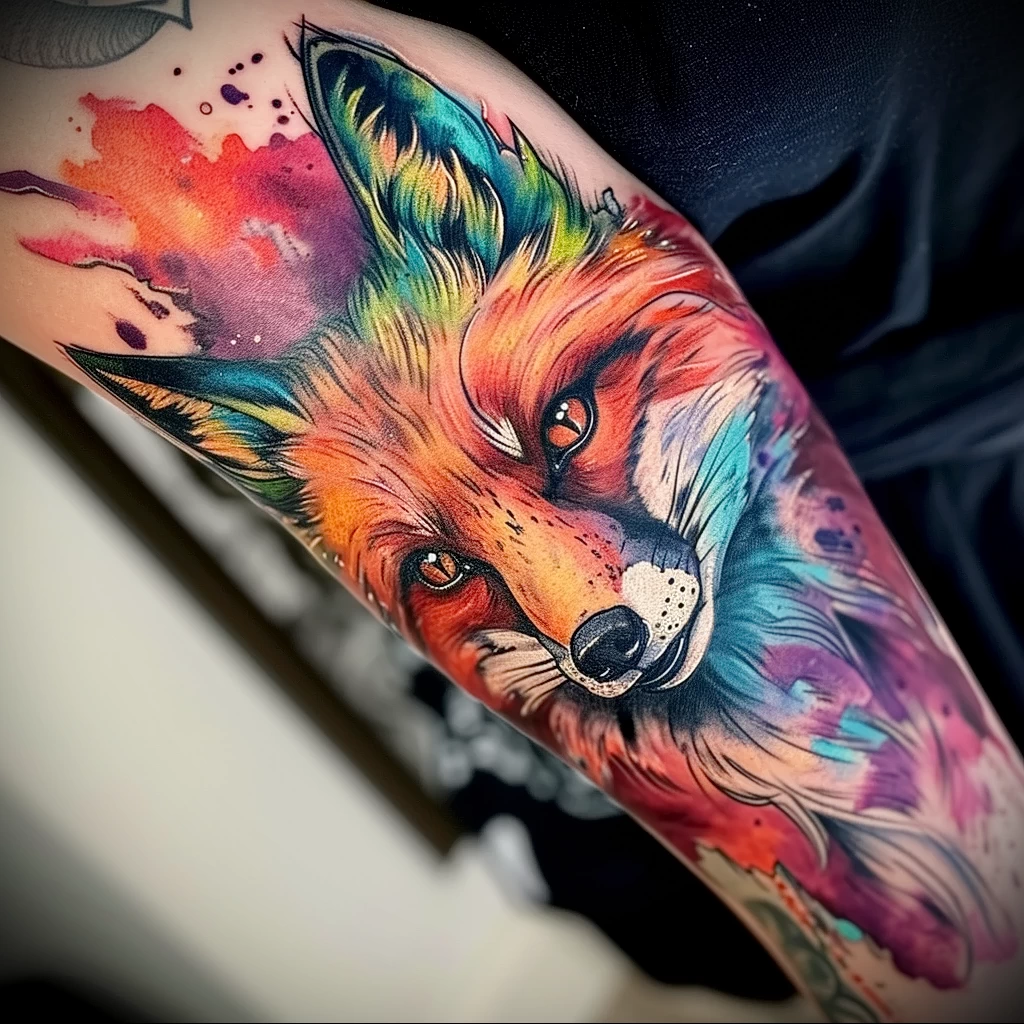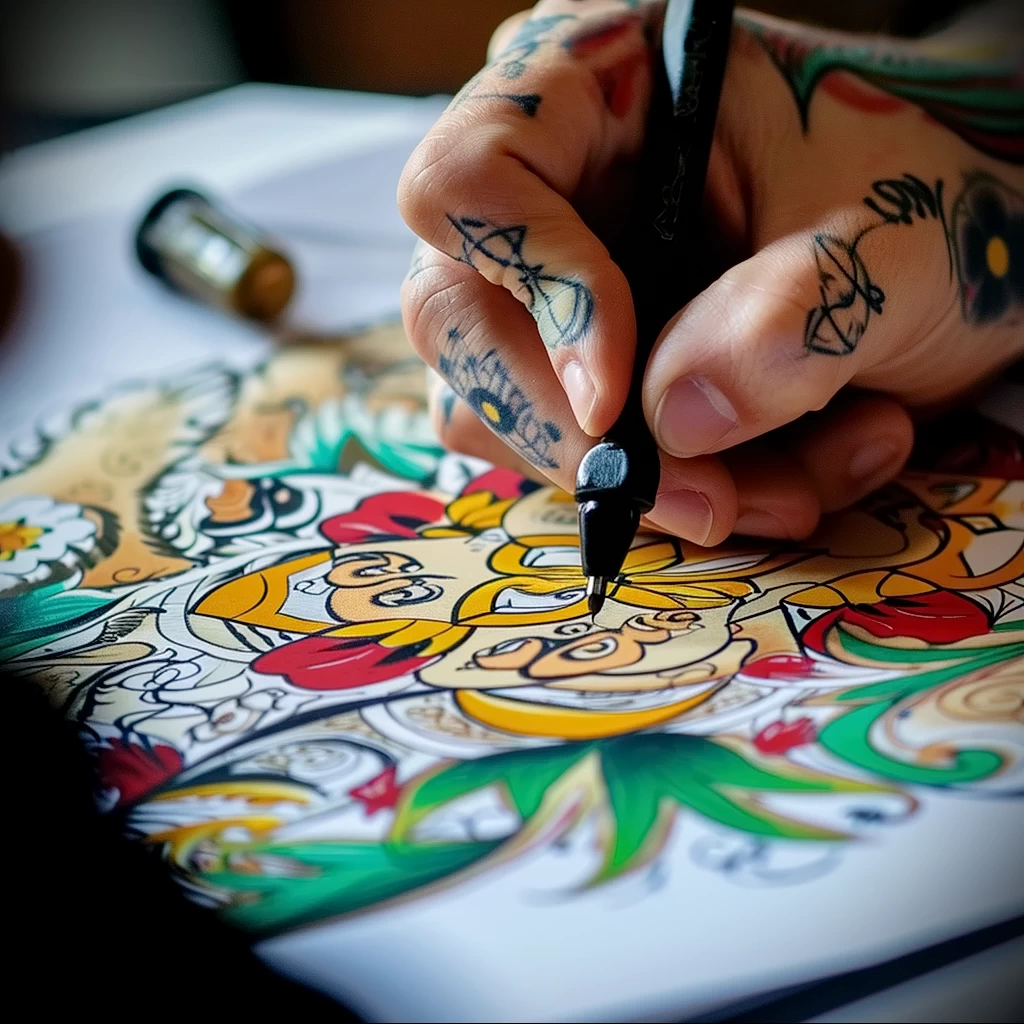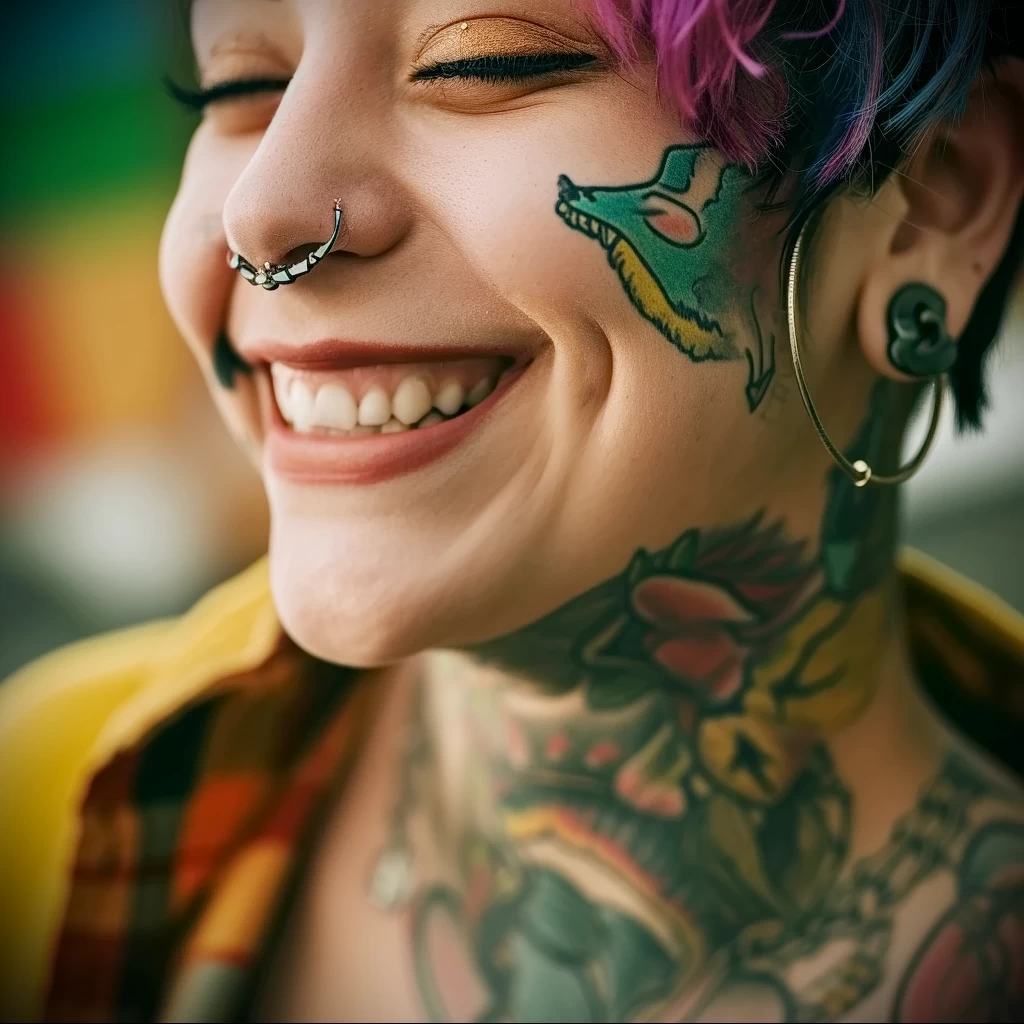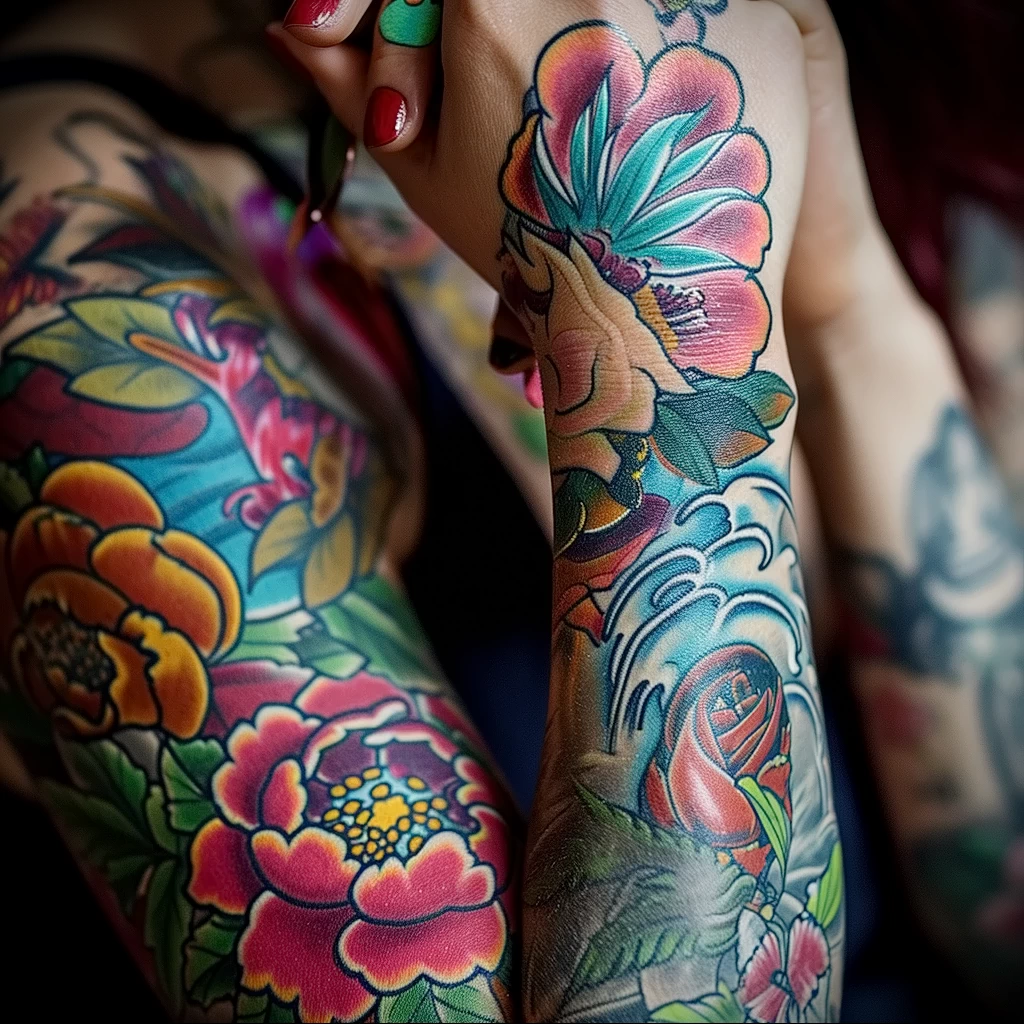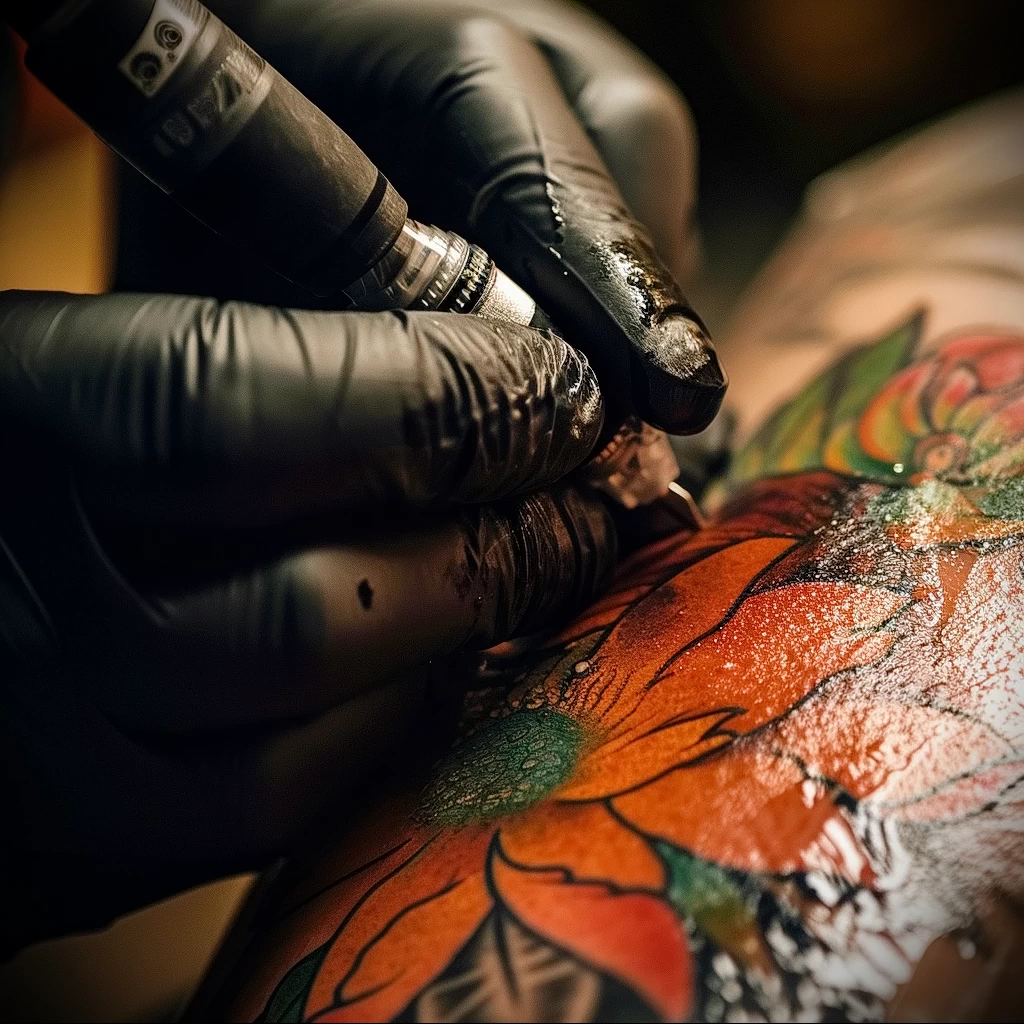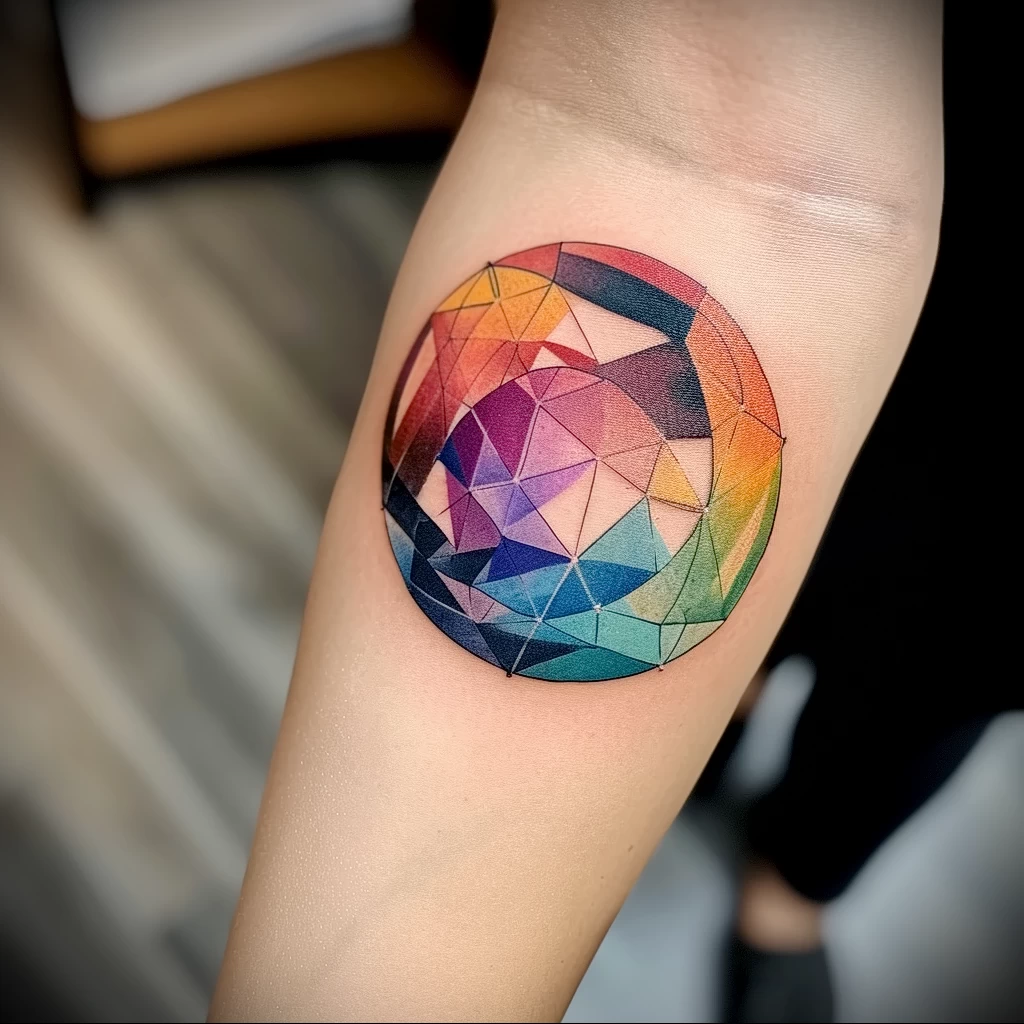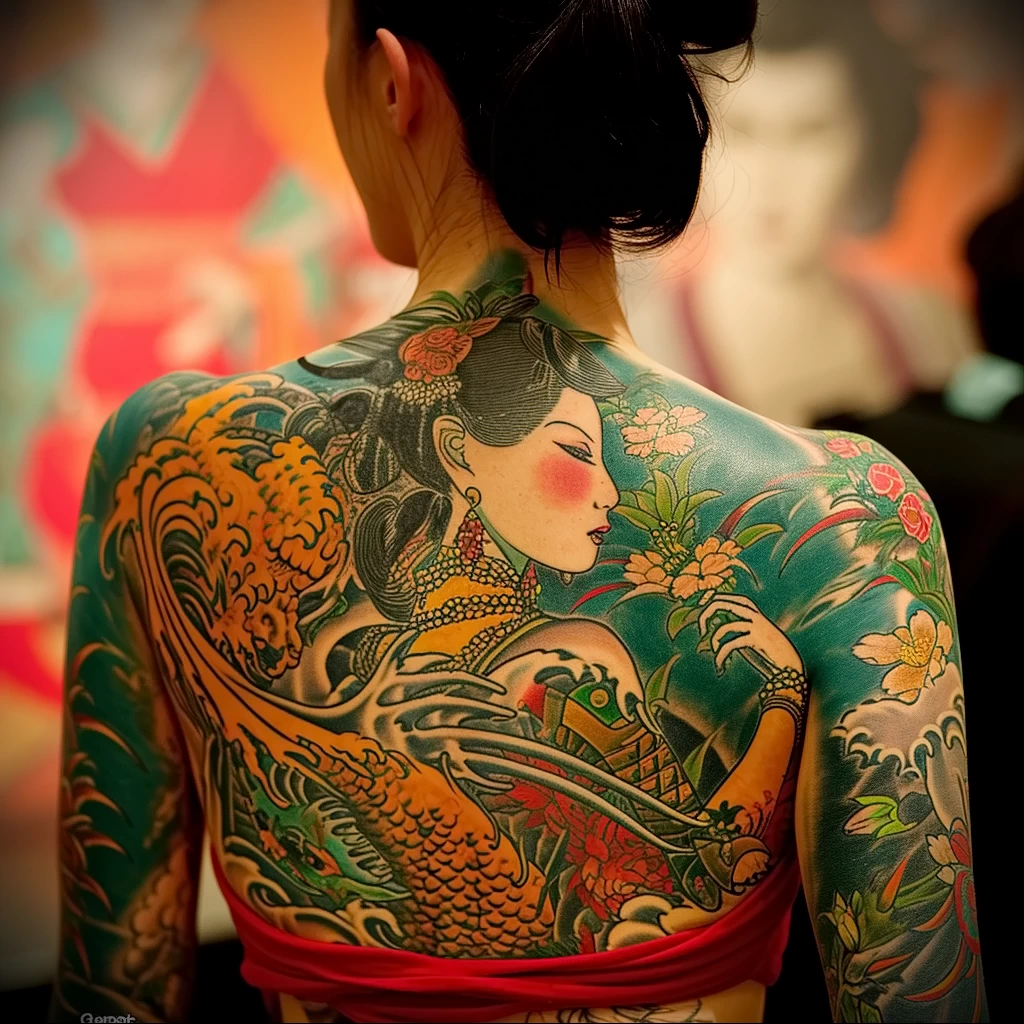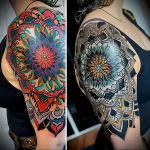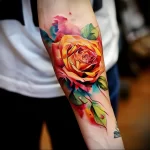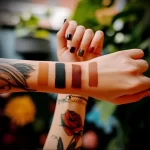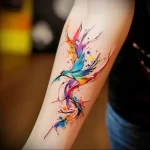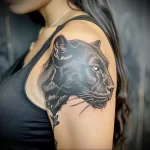Choosing the right ink color can drastically transform your tattoo into a true work of art. In this article, we will delve into how to select the perfect color for your next tattoo, taking into account factors such as skin type, personal preferences, and the latest trends in tattoo art. From classic black-and-white to vibrant and unique color solutions – we cover all aspects of tattoo color selection.
WHAT ARE THE BEST INK COLORS FOR TATTOOS: INTRODUCTION
In the modern world of tattoo art, color plays a crucial role, adding uniqueness and expressiveness to each image. On our site dedicated to the world of tattoos, we explore the importance of color in tattoos, which not only decorates the body but also reflects the wearer’s personality. Color brings tattoos to life, conveying mood and the idea the person wants to express. Choosing ink colors for tattoos is not just an aesthetic decision. It affects how the tattoo will look immediately after application and how it will change over time. Different colors have varying degrees of durability and are perceived differently on various skin types, making the color selection process an important part of preparing for a tattoo. In our article, we will thoroughly explore how to choose colors for tattoos, considering all nuances and features.
MAIN FACTORS IN CHOOSING A COLOR
The choice of color for a tattoo largely depends on individual skin characteristics and personal preferences. Tattoo experts emphasize that each skin type has its own features that must be considered when choosing a color palette. For example, bright and saturated colors will appear clearer and brighter on light skin, while on darker skin they may lose their saturation and visually merge. The influence of skin color on the perception of inks plays a significant role in how a tattoo will look. Tattoos in warm tones such as orange, red, or yellow look best on dark skin, while cool shades may be less noticeable. The opposite is true for light skin, where tattoos in cool shades appear more expressive. Considerations of durability and fading of colors also play a key role in choosing a color for tattoos. Some ink colors, such as black and dark blue, are known for their durability and resistance to fading. However, brighter and lighter colors, such as yellow or pink, may fade over time and lose saturation. Therefore, it is important to consider how colors will change over time and how this will affect the overall appearance of the tattoo.
POPULAR INK COLORS AND THEIR MEANING
In the world of tattoos, certain ink colors have become symbols of classics and universality. The most common are black and gray. Black is often used for its depth and brightness, which allows for clear and detailed images. Gray is ideal for creating shadows and gradients, adding depth and volume to tattoos. These colors are chosen by both beginners and experienced tattoo enthusiasts for their ability to withstand the test of time without significant fading. Bright colors, such as red, blue, and green, are also very popular in the tattoo industry. Red is often associated with passion and energy, making it an ideal choice for tattoos that need to express emotions or significant life events. Blue is preferred for its calming qualities and the ability to convey a sense of harmony and tranquility. Green is often chosen to depict nature and symbolize growth and rebirth. Pastel tones and unusual colors, such as pink, purple, and white, are gaining popularity for their softness and ability to create unique, gentle images. Pink is used to give tattoos softness and femininity, while purple is for expressing mystery and spirituality. White is often used to create accents in a tattoo, adding elegance and subtlety to the design. These colors are perfect for those who want to stand out and express their individuality through a tattoo.
SPECIFICS OF COLORED TATTOOS
Working with colored inks in tattoos requires special techniques and attention to detail from artists. Unlike traditional black and white inks, colored inks offer a wide range of possibilities for creativity but simultaneously require a more careful approach to color selection and mixing. Each color must be chosen considering how it will combine with other colors and how it will look on the skin. This is especially important when creating multicolored and complex designs, where each color must harmonize with the others and support the overall concept of the tattoo. When comparing colored tattoos with black-and-white ones, it becomes clear that colored tattoos offer a wider range for expressing ideas and emotions. Colored tattoos can be more expressive and artistic, while black-and-white tattoos often focus on contrast and detail. However, colored tattoos may also be more prone to fading and require more careful maintenance. Care for colored tattoos begins immediately after application. It is important to strictly follow the artist’s instructions for caring for a fresh tattoo to avoid infections and ensure proper healing. Additionally, it is recommended to avoid direct sunlight exposure and use sunscreen to protect the colored inks from fading. Regular moisturizing of the skin also helps maintain the vibrancy of the colors. These simple care steps can significantly extend the life of a colored tattoo and maintain its brightness for years.
INK COLORS FOR VARIOUS TATTOO STYLES
The choice of ink color is especially significant depending on the style of the tattoo. For example, in traditional tattoos, also known as “Old School,” bright, saturated colors like red, green, blue, and yellow predominate. These colors create distinct and vivid images that remain clear and expressive over many years. New School tattoos, a modern evolution of the traditional style, also use bright colors but add more gradients and shades, allowing for more complex and detailed images. Minimalism and geometric tattoos, on the other hand, often limit themselves to black or dark gray colors, emphasizing the purity of lines and forms. In these styles, color is used very sparingly to highlight the strictness and simplicity of the design. However, some artists add small accents of bright colors to add extra depth or express certain emotions. Realism and portrait tattoos require a more nuanced approach to color. Artists specializing in this style use a wide range of colors and shades to accurately reproduce skin, hair colors, and lighting features. In portrait tattoos, it is crucial to skillfully combine colors to achieve a realistic image of the face or body. These tattoos can be either colored or black-and-white, depending on the client’s desire and the artistic concept. The choice of ink color plays a key role in highlighting the style and meaning of the tattoo, making each image unique and expressive.
CHOOSING INK COLOR CONSIDERING INDIVIDUAL CHARACTERISTICS
Choosing a color for a tattoo is a process closely related to the individual characteristics and personal preferences of each person. Tattoo experts advise considering not only personal tastes but also physical features such as skin, eye, and hair color when choosing the appropriate ink color. For instance, some colors may appear brighter and more expressive on light skin, while they may lose their intensity on dark skin. It’s also important to consider how the ink colors will blend with the overall color scheme of the wardrobe and other existing tattoos. It’s also important to remember that each color has its symbolic meaning, which can play a role in the choice. For example, red is often associated with strength and passion, while blue can symbolize calmness and reliability. Therefore, it’s recommended to carefully think about what exactly you want to express with the tattoo and which color will best suit this purpose. Consultation with a professional tattoo artist is a key aspect of choosing ink color. Experienced masters can offer advice on choosing a color that will best match the client’s skin type and help determine which colors will best suit the desired style and design of the tattoo. The artist can also provide information about the durability of different ink colors and how they might change over time. Choosing ink colors for tattoos is a process that requires thoughtful consideration and planning. Taking into account personal preferences, physical characteristics, and professional advice from the tattoo artist, you can select the perfect color that will please the eye and reflect the individuality of the tattoo wearer for many years.
TRENDS AND INNOVATIONS IN COLORED TATTOOS
The world of colored tattoos is witnessing constant development and the introduction of new technologies that expand the boundaries of traditional tattoo art. Modern ink technologies and application methods allow for brighter, more saturated, and durable images. For example, the emergence of UV inks, which glow under ultraviolet light, opens new possibilities for creating unique tattoos visible only under certain conditions. The use of hypoallergenic inks is also noteworthy, reducing the risk of allergic reactions and making the tattooing process safer for clients with sensitive skin. Modern trends in colored tattoos reflect diversity and creative freedom. One such trend is the “watercolor” style, which imitates the effect of watercolor painting on the skin. This style is characterized by soft color transitions, delicate shades, and the absence of clear outlines, giving the tattoo the appearance of an artistic canvas. Another popular direction is the use of neon and bright colors, making the tattoo especially expressive and noticeable. However, despite the emergence of new styles and technologies, classic colored tattoos, such as Japanese and traditional American styles, remain in demand. They maintain their popularity thanks to time-tested techniques and classic color solutions that remain relevant over the years. Innovations in colored tattoos provide artists and clients with a broader range of options for self-expression and allow for the creation of unique works of art on the skin. With the development of new technologies and materials, the world of tattoos continues to evolve, offering ever-new and exciting opportunities for creativity.
FAQ (FREQUENTLY ASKED QUESTIONS)
Q: Which ink color for tattoos retains its brightness the longest? A: Black and dark blue inks typically retain their brightness and clarity the longest. They are less prone to fading compared to bright or light colors, such as yellow or pink. However, the durability of any color also depends on the quality of the inks, the tattooing technique, and the care for the tattoo. Q: Can colored tattoos cause an allergic reaction? A: Yes, in rare cases, some people may experience allergic reactions to certain types of inks, especially colored ones. It is recommended to perform an allergy test before applying the tattoo, especially if you are prone to allergies. Q: What ink color is best suited for light/dark skin? A: On light skin, both dark and bright colors are clearly expressed. On dark skin, tattoos in brighter and more saturated colors, such as red, orange, or bright blue, look best to create contrast with the skin tone. Q: How long does it take for a colored tattoo to heal? A: Healing a colored tattoo usually takes from two to four weeks, but full healing can take up to several months. It is important to strictly follow the care instructions for the tattoo to ensure proper healing and color preservation. Q: Can colored tattoos change color over time? A: Yes, some colored inks can change their shade over time under the influence of sunlight and natural aging processes of the skin. For example, some red inks may acquire a more pinkish or orange hue over time. Q: How safe are colored inks for tattoos? A: Modern colored inks for tattoos are produced in compliance with strict safety standards. They are generally safe to use, but it is important to choose high-quality inks from reliable manufacturers and turn to experienced tattoo artists. Q: What care is required for a colored tattoo after its application? A: After applying a colored tattoo, it is important to regularly moisturize the skin, avoid direct sunlight exposure, and apply sunscreen to the tattoo area. It is also advisable to avoid bathing in water until full healing and not to peel off the scabs that may form on the surface of the tattoo. Q: How often do colored tattoos need to be refreshed? A: This depends on many factors, including skin type, ink quality, and tattoo care. Some colored tattoos may require refreshment every few years to maintain the brightness of the color. Q: Does the color of the tattoo affect its cost? A: Colored tattoos can be more expensive than black-and-white ones due to the more complex application process and the use of multiple ink colors. The price may also depend on the complexity of the design and the experience of the tattoo artist.
CONCLUSION ON CHOOSING THE BEST COLORS FOR TATTOOS
In conclusion, it’s important to emphasize that choosing a color for a tattoo is not just a matter of aesthetics, but also a way to express personality and individuality. Colors in tattoos can tell a story, convey emotions, and even express the beliefs of their owners. Therefore, before making a final decision on the color of the tattoo, it’s worth taking the time to understand what emotions and messages you want to convey with your tattoo. Experts advise considering not only current fashion trends but also the long-term perspective, as the tattoo will remain with the person for a lifetime. It’s important to choose colors that are not only attractive today but will also please the eye for many years to come. It is also recommended to pay attention to the quality of the inks and the experience of the tattoo artist, which will ensure the best result and safety of the procedure. The final aspect is the interaction with the tattoo artist. A professional can not only help choose the appropriate color but also offer a design that best highlights the client’s individuality and desires. Joint creativity of the artist and client in the process of choosing the color and design of the tattoo turns each tattoo into a unique work of art, reflecting the unique story of each person. Color in tattoos plays a key role in creating a work of art that the wearer will carry for a lifetime. The right choice of color contributes to the tattoo becoming not just a decoration but a true expression of the inner world and part of a personal story. Choosing a color for a tattoo is an important decision that can transform your tattoo into a unique work of art. We invite you to share your opinions in the comments and join our community on social networks and messengers, so you don’t miss any interesting news about tattoo art!
INTERESTING PHOTOS OF PEOPLE WITH TATTOOS FOR FINDING IDEAS FOR YOUR FUTURE TATTOO
(click to see more photos)
